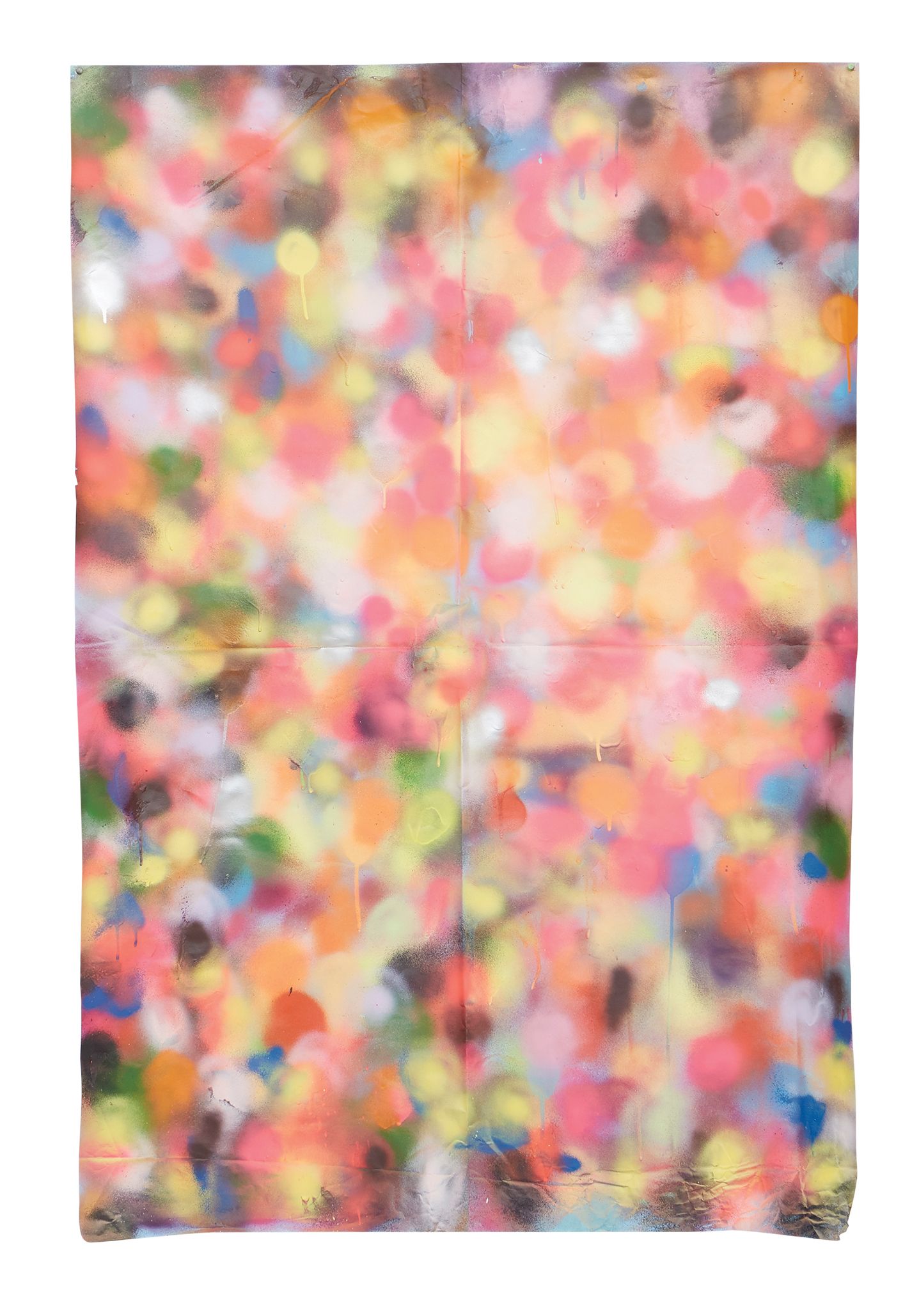
Chapter five of Zia Haider Rahman’s 2014 novel, The Light of What We Know, opens with an epigraph, borrowed from John le Carré (A Perfect Spy), that could quite reasonably encapsulate the foundations of Rana Begum’s practice: “Sometimes our actions are questions, not answers.” Her practice, as this rich, multi-authored volume tells us, is an experimental inquisition: questions around colour, space, material and light drive and develop her multifaceted work. And, in bringing together her oeuvre, it shows how her curiosity has given rise to an uninhibited approach that jumps between media.
This, Begum’s first monograph, is timely. Last year she became a Royal Academician and recently unveiled large-scale commissions for Wanas Konst, Sweden and the Folkestone Triennial. Next year a major solo exhibition opens at Mead Gallery, Warwick, that will include her first video installation.
Begum’s work performs visual flips—colours switch and surfaces hum
As Marina Lind explores in the opening section, whether in the form of sculpture, painting or furniture, using fingerprints, nets or fishing floats, tying it all together is the viewer. We are as intrinsic to Begum’s work as the materials she manipulates. For with our presence, her work performs visual flips; colours switch and surfaces hum. This is, Lind argues, a standalone practice. But, of course, there is context and Lind charts it well. Her discussion of contemporary abstraction is insightful, splitting it into artists who address abstraction’s original utopic aims, those who find an analogy with abstraction in capitalism and others who see abstraction as withdrawal. She situates Begum’s work outside these streams, suggesting hers is an abstraction of “style as well as method…exploring form and matter, colour and light, in and of themselves”.
While this might all sound familiarly “Juddian”, Lind is quick to qualify that Begum is not a faithful Minimalist. Where there is closeness to Donald Judd et al, there is also distance. Begum plays fast and loose with her work’s sequencing, we learn, and reserves the right to flexibility in her numbering system. Hers are “eccentric objects” rather than the “specific objects” associated with Judd. While Lind pours a lot into Begum’s “genre” and even quickly considers her palette—drawing it into the realms of Mannerist colourism—she is remiss in acknowledging Begum’s debts to Op art and does not refer to Lydia Okumura, whose mesh work such as Maze (2018) could quite possibly share many of Begum’s concerns.

Begum’s arms-wide-open approach is emphasised by her lucid conversation with Lisa Le Feuvre (section two). She might make furniture that glows from a fluorescent undercroft, aluminium bars of colour, or sculptures from UV straws. She is absorptive and hospitable to new stimuli. Her time at St Ives, as Sarah Victoria Turner discusses, brought a new tactility to her work, stimulated by close encounters with Barbara Hepworth’s silky sculptures as well as the accoutrements of the local fishermen. Light looms large in this section, and it is through its changing character across continents that we begin to understand the specificity to which Begum is so sensitive.
It is as if, Sam Jacob suggests, she is an architect. But not entirely. His riveting essay invigorates this volume, opening with a panegyric on the legendary mathematician John Conway’s two-hour lecture on the marvellous symmetry of brick walls. Jacob treats Begum’s visual repetitions in parallel with Conway’s infectious awe. With similar enthusiasm, Jacob expounds her modular approach that transforms the singular mundane object into a magnificent geometric whole. An example is the stunning No. 473 (2014), a cavernous, light-filtering canopy created from multiples of straw baskets. This structure, Jacob suggests, shows her architectural nous, as do her drawings, where lines speak of space and liberation from the practicalities of the discipline. Her lines leap from the page and “exert their forces outward onto us”.
It is Begum’s ability to induce our self-consciousness and hyper-awareness of space and the materials around us that this volume intentionally foregrounds
It is Begum’s ability to induce our self-consciousness and hyper-awareness of space and the materials around us that this volume intentionally foregrounds. Following the premise of its title, Space Light Colour, this agenda is developed across the essays, with each offering a different angle. Things get a little knotty with Adnan Madani’s stunning essay considering Begum’s strain of abstraction. For while Lind believes that her practice is “in and of itself”, Madani seems to refute the intellectual foundation of such claims. His piece beautifully abstracts abstraction from its European form and suffuses Begum’s work with multiple and co-existing contexts. What if, he suggests, her style is a more “powerful, living modernism” and a decoy for “unfamiliar ideas and contexts and anthropomorphisms and philosophies?”.
What is evident across this volume is that Begum has a nimble practice that deflects categorisation, as much as her works push away light. And perhaps, within all her playfulness and colour blocks, there is a provocation that we’ve long missed.
• Rana Begum: Space Light Colour, Lund Humphries, Sam Jacob, Lisa Le Feuvre, Maria Lind, Adnan Madani and Sarah Victoria Turner, with a foreword by Anne Barlow, 192pp, 180 colour illus., £39.99 (hb), pub. 6 September 2021
• Cleo Roberts-Komireddi is a writer and lecturer on contemporary South and Southeast Asian art
Source link : https://www.theartnewspaper.com/review/rana-begum-refined-language-minimalist-abstraction












